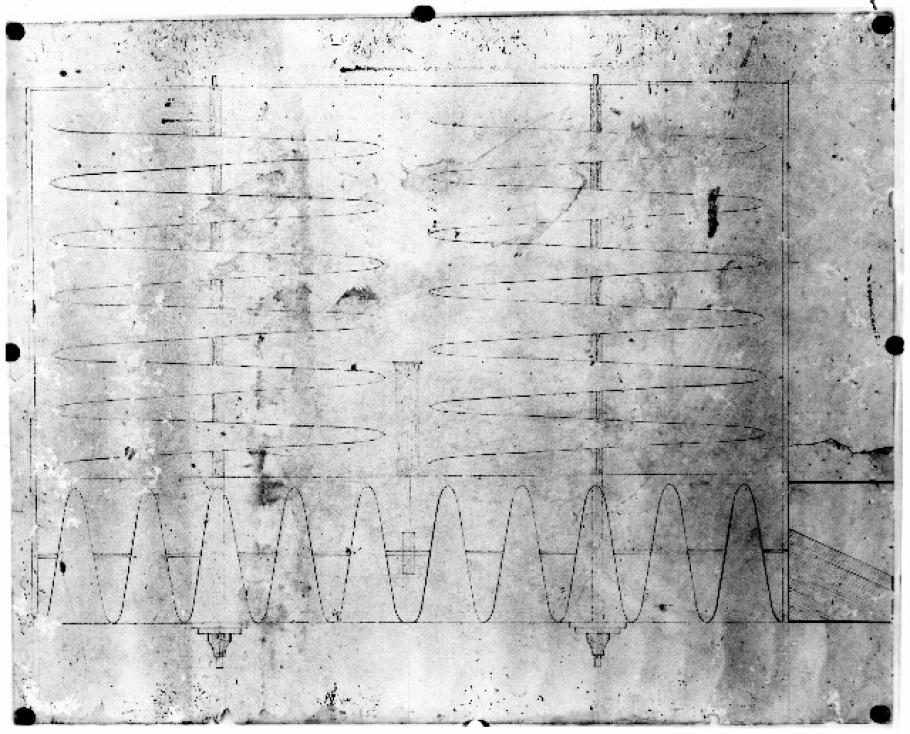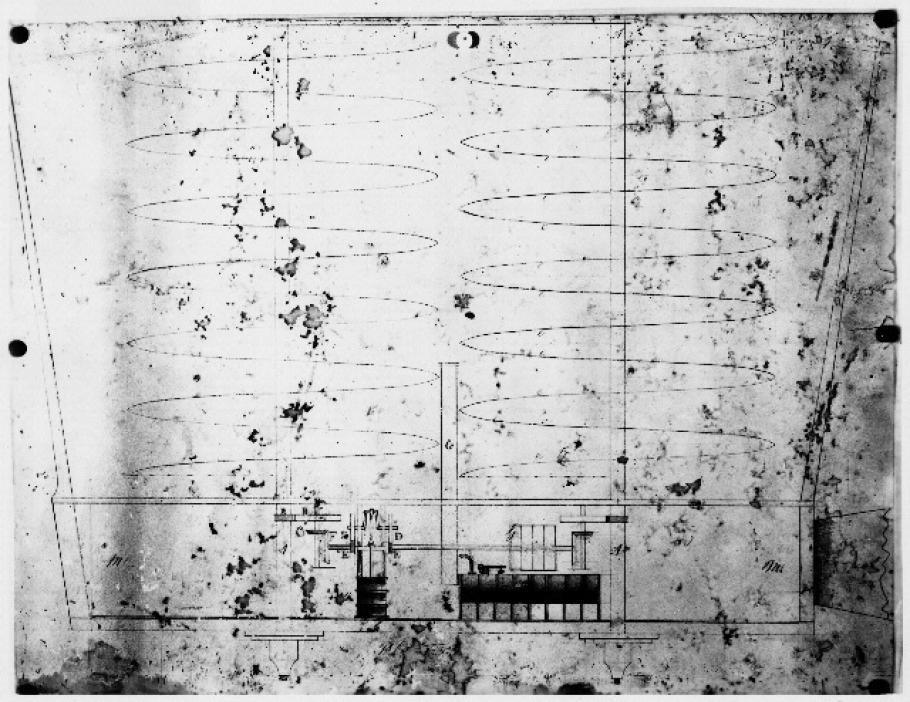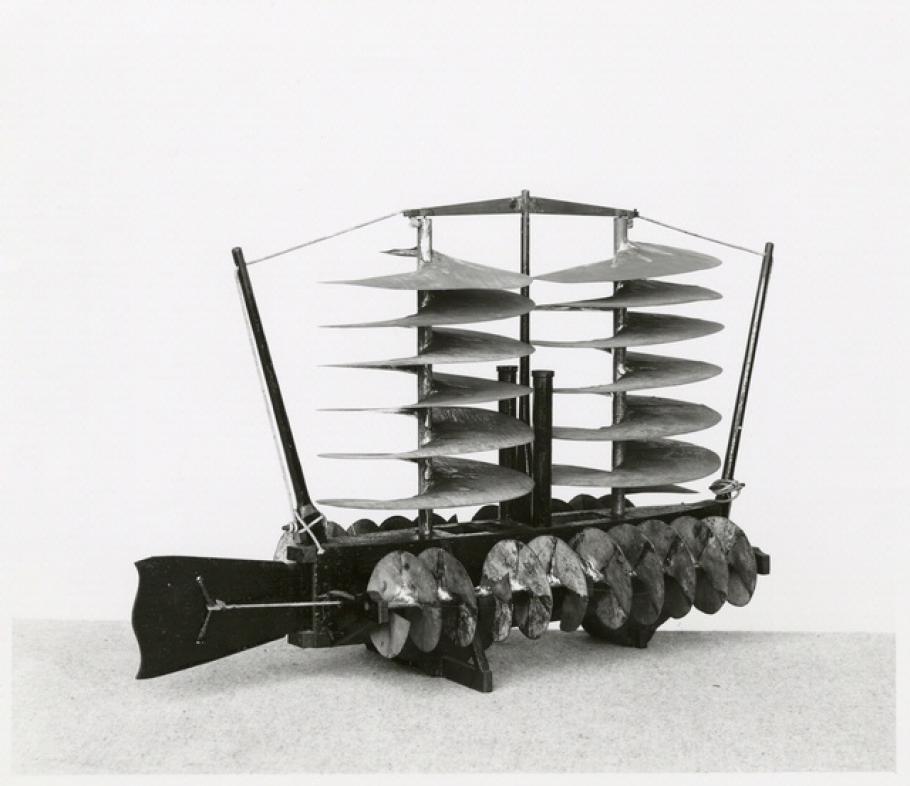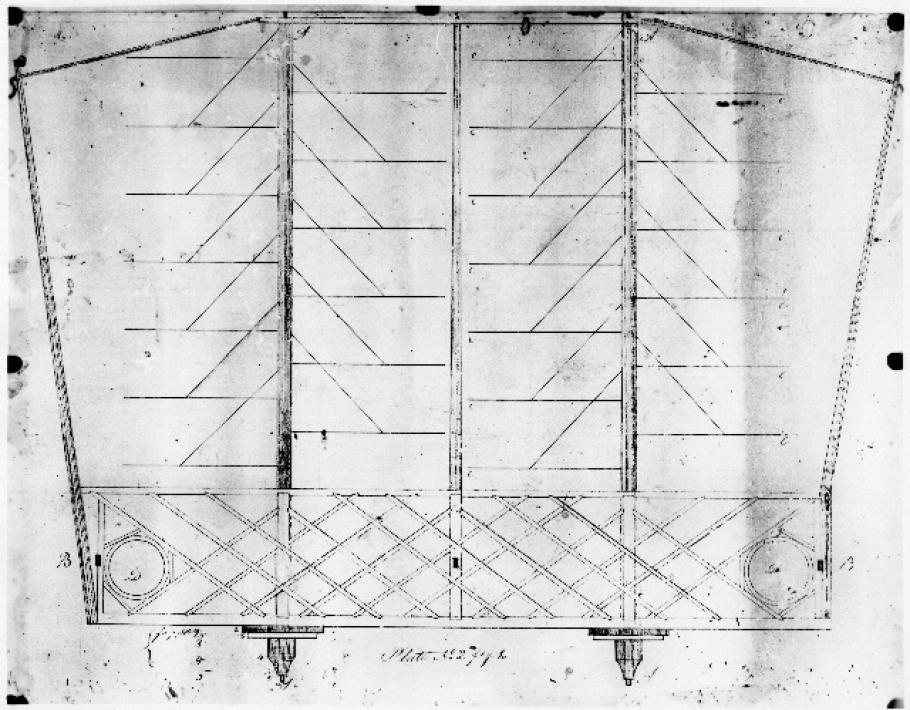As my colleague Dr. Tom Crouch referenced in a previous post, our nation is currently in the midst of commemorating the 150th Anniversary of the American Civil War (or sesquicentennial for you Latin fans). While other branches of the Smithsonian, such as the National Museum of American History and National Portrait gallery, have a wide depth of artifacts and images with which they can share stories from the time period, the National Air and Space Museum has far fewer relevant items in its collection. We do, however, have some of the most surprising Civil War artifacts in the entire Institution. Not only does the Museum preserve Thaddeus Lowe’s “double telescope,” but the Museum’s Archives Department preserves a set of drawings containing plans for the most marvelous of contraptions – the Confederate helicopter.
The American Civil War brought about great advances in the use of technology in warfare. Balloons, railroads, ironclad ships, and even a submarine were demonstrated throughout the conflict, and new ideas were constantly being thought up and tried on the battlefield. Some ideas were more exotic than others, such as the one thought of by William C. Powers. In 1862, most of the ports of the Southern states were completely blockaded by Union naval forces, choking off much needed supplies and commerce. William C. Powers was an architectural engineer living in Mobile, Alabama, and personally saw the effects of the Northern blockade. Powers knew that the southern states did not have enough ships to break the blockade with naval power, and going through the blockade was full of risks. William Powers saw another way to crush the blockade – attack it from the air.
Using his engineering skills, Powers began drafting plans for a machine that could lift off and propel itself through the air to attack Union ships. Although balloons were being effectively used for observation, they lacked directional control and could not lift enough weight to make an effective bomber. Powers drew upon the work of other famous engineers, such as Archimedes and da Vinci, and employed Archimedean screws for lift and thrust, all powered by a steam engine. The engine was located in the middle of the craft, and used two smokestacks, which can be seen in the drawings. Two Archimedean screws on the sides gave the helicopter forward thrust, similar to how a propeller works on a ship in water, and two mounted vertically in the helicopter gave it lift. A rudder was added to the rear of the craft in order to provide steering. The drawings below show these Archimedean screws represented by the snaking line that runs across the page.
After drafting his plans, Powers set out to make a small model and then a full-size mockup. Although he had some success creating the small model, as can be seen below, limited resources and lack of support prevented the idea from ever leaving the drawing board. Family lore also says that fear prevented the idea from getting off the ground. When the drawings were donated to the Museum, family members stated that they were hidden during the war to prevent them from falling into Union hands. It was said that a full size example was never created for fear that it would be captured by the Union, mass produced, and used to rain destruction on the Confederate armies and cities throughout the South.
Although the laws of aerodynamics were not on the side of William C. Powers or his helicopter, they do reveal an interesting aspect of the technological advances which came about as a result of the Civil War. Powers even stumbles upon a building method which would be resurrected later on to manufacture airships and even bombers.In the drawing shown below, it is clear that the “hull” of the Powers aircraft would have been constructed using a lattice approach, similar to that used in the British Vickers Wellington Bomber. This provides incredible strength without adding lots of weight.Perhaps Mr. Powers was just ahead of his time….




